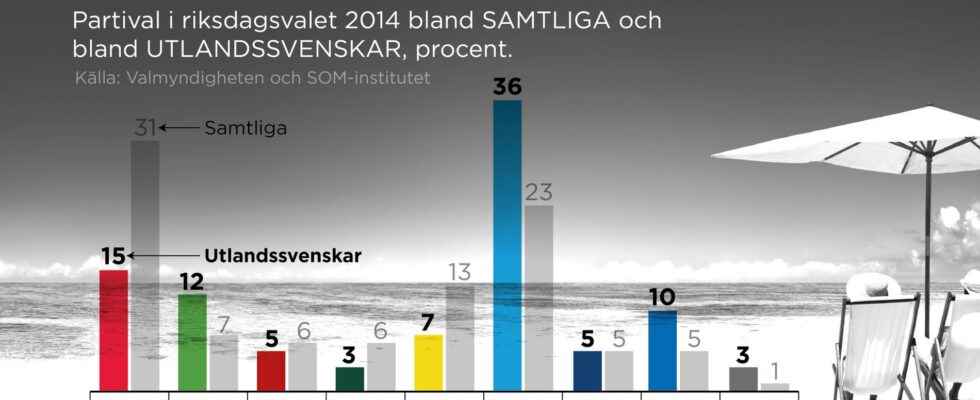Published: Less than 20 min ago
From today, Swedes abroad can vote at embassies and consulates. At the same time, only about 15,400 votes separate the blocs, according to election researchers.
– Now it feels more important than ever that you actually go to the ballot box, says Cecilia Borglin, general secretary of Swedes in the world.
The 2022 election could be a shocker. In any case, if you look at the latest opinion polls that the political scientists at the University of Gothenburg compile in what they call “The Survey of Surveys”.
Currently, the red-green block S, V, C and MP get 49 percent of the votes, while the right-wing block M, KD, L and SD has a slight advantage with 49.2 percent.
According to the election researchers’ compilation, the right-wing bloc would win the election today with 175 seats, against the red-green bloc’s 174.
It boils down to just over 15,400 votes that separate the sides according to the Norwegian Electoral Authority’s preliminary statistics.
Winners and losers
Should the result look similar on election day as well, the parties will have to wait for the so-called Wednesday votes, which includes, among other things, the early votes of Swedes abroad and late arrivals, says Henrik Ekengren Oscarsson.
– If the distribution of mandates was 175-174, I probably wouldn’t have declared myself winner or loser on election night.
Even for parties close to the four percent threshold, whether above or below, the bill can be a nail-biter.
This year, the Swedish Electoral Authority has sent out voting cards to 160,517 people living abroad. But only around 40 percent of Swedes living abroad voted in the last election.
– It is generally important to vote to exercise your democratic right, but now it feels more important than ever that you actually go to the ballot box, says Cecilia Borglin, secretary general of the organization Swedes in the World.
As of today, those registered in the voter register may vote at consulates and embassies. Postal voting opened on July 28.
There are obstacles
At the same time, there are certain obstacles to the implementation of the foreign vote. When the organization sent out a survey to Swedes abroad, several cited a lack of information, the distance to the polling station and a lack of commitment from the parties as reasons for not voting.
Not all embassies and consulates open on August 18, but the dates may vary.
– We think you should test e-voting as you have done in Estonia, says Cecilia Borglin.
Historically, foreign votes have not had any major impact on the election results, according to Henrik Ekengren Oscarsson.
But in the 1979 election, the Wednesday votes were absolutely decisive. Olof Palme’s red block looked like it would get a majority, but after counting the votes, the bourgeois parties took 175 seats. Then 8,500 votes separated the blocks.
M largest party
According to a rare survey that the Norwegian Electoral Authority and the SOM institute did after the 2014 election, the Moderates benefit from foreign votes. M received 36 percent of the votes in according to the survey, which can be compared with the election result of 23 percent. The Environmental Party and the former People’s Party also had a stronger position among Swedes abroad, while the Social Democrats plummeted from their election result of 31 percent to 15 percent.
The formal election result will come on the Sunday after the election, but the final count for the parliamentary election was last completed on Thursday.
– There can be lots of other mandates that change in this parliamentary situation, so you should probably lie quite low – respect all voters, says Oscarsson.
Facts
That’s how the Swedes abroad voted
According to a survey conducted after the 2014 election, Swedes abroad voted in the following way in the parliamentary election.
First, a question was asked about whether you voted at all in the Swedish parliamentary election in 2014. Those who answered yes were then asked a follow-up question about which party they voted for.
The election results in parentheses.
W: 5 (6)
A: 15 (31)
C: 3 (6)
FP: 10 (5)
M: 36 (23)
KD: 5 (5)
MP: 12 (7)
SD: 7 (13)
FI: 5 (3)
Other: 2 (1)
Blank: 1
Source: The Norwegian Electoral Authority and the SOM institute
Read more
